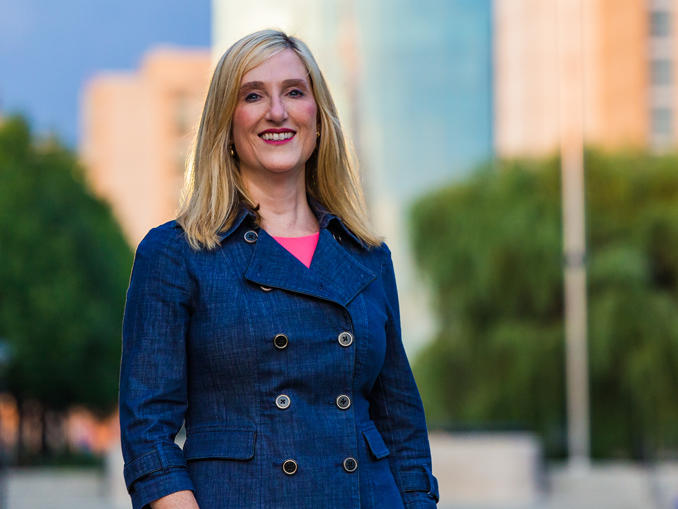Organizations and business leaders are looking for guidance in uncertain times. There’s one voice that matters more than any other, right now: the voice of the customer. The key to personal and professional success is simple: tune in to customers, and turn down the noise.
Creating a culture of listening — both to employees and customers — is a top priority for every leader. What I discovered as a Chief Customer Officer and as a CMO is that being a great listener is often easier said than done. Growing companies can create a listening and learning culture that welcomes feedback and collaboration opportunities from all its stakeholders – employees, customers, business partners, and their communities.
A challenge that comes with success and growth is that over time, you become bombarded by Big Data, swamped with surveys, and buried in feedback. Chaotic calendars and competing priorities inadvertently isolate many well-intentioned leaders from their customers and make it tempting to manage relationships by statistics rather than by stories. What can companies do to break down those barriers? How can we listen to our customers with a beginner’s mind and build more customer-centric cultures designed to take action on what we hear?
There’s a brilliant blueprint to help organizations build long-lasting customer relationships and advocacy that my frequent blog co-author and colleague Karen Mangia just introduced. Our virtual visit revealed how leading organizations are deploying listening as their top strategy to return to growth and to capture additional market share during these turbulent times. Mangia has published two books, and co-authored over 20 articles, during the pandemic, by deeply and actively listening to various stakeholders and capturing lessons learned along the way.
Karen Mangia is vice president, customer, and market insights at Salesforce.
Karen, you already launched a best seller during the pandemic: Working From Home: Making the New Normal Work For You. Now, you’re introducing another book just 60 days later: Listen Up! How to Tune In To Customers, And Turn Down the Noise. Congratulations! And how is that possible?
At the beginning of the pandemic, you challenged all of us during a virtual coffee social hour to think about our contribution. To rethink what thought leadership and being of service means in our new context. Then you took the first step — by starting this blog series. And then inviting all of us to join you. I took that message to heart: What can I contribute? And then, With whom could I collaborate? Answering those two questions resulted in our blog series together as well as the two books.
What you role-modeled is what we all need right now — a mindset shift. A mindset that asks, Why not? Instead of seeing all the reasons something can’t be done, that simple question opens up paths to possibilities. Asking better customer questions is a key theme in Listen Up!, and I believe better questions lead to a mindset shift about how to improve the health of our customer relationships now. The best way to gain powerful new perspectives into any customer, anywhere is to question everything.
“The biggest communication problem is we don’t listen to understand. We listen to reply.”
— Vala Afshar (@ValaAfshar) June 4, 2020
So many of us listen to respond instead of listening to understand. How can we get more curious and set ourselves up to hear what our customers are (and sometimes aren’t) saying?
I’ll never forget my first sales call.
“Don took the early retirement package,” my boss explained, peering out over his reading glasses while I looked over this office. Where is this conversation headed, I wondered. And who is Don?
“And so, we need you to take the lead as the account manager for a few of our customers,” my boss shared, “in addition to your day job. Just until we can hire a backfill.”
I was assigned to the “STAR” account module. I soon discovered that this customer set lacked the luster and the shine the name might otherwise imply. STARs were the smallest customers: “Small, Troubled, And Risk,” was what I think the acronym really implied.” They were the worst accounts in the branch.
One hot summer day I sat in the lobby of the only customer who agreed to see me. It was more like a poorly lit closet with outdated trade magazines and a few rickety chairs, as I recall. When I was invited into the conference room, I slowly pulled a beige manila folder out of my borrowed briefcase — like a magician starting a trick. It was time for my first sales pitch. I shared the printed proposal with the customer. I had cleverly downloaded it from our company’s intranet site. Then I proceeded to read the entire document. Out loud — word for word. Can you imagine?
But, get this. Even with an incredibly terrible pitch, I still won the deal. How? Because, despite all the tactics I got wrong, I got the most important strategy right. I listened.
Maybe I didn’t have a great pitch, but I had something more important: the beginner’s mindset. I wasn’t burdened with what I already knew. Instead, I was on a mission to discover what I didn’t know (which was, basically, everything at that point). We all need to unburden ourselves from what we think we already know about our customers. We need to tap into our beginner’s mind. In the book, I share strategies and tools — from better questions to how to take ego out of the conversation so hard-hitting feedback can be heard, listen to, and understood — without an atmosphere of defensiveness, disconnection, and distraction.
We need to listen with a sense of urgency as well. Because all of the feedback we uncover gives us a chance to move at the speed of relevance.
There’s never been a greater need for listening strategies like these:
84% of consumers say that the experience a company provides is as important as its products and services. For business to business buyers (in the B2B space) that number jumps to 89%. Steve Cannon, the CEO of Mercedes Benz USA says, “Customer experience is the new marketing.” Welcome to the brand manual for our times: can you hear that?
Today, the customer is the mission, the megatrend, and the message. The time to transform is now.
What else can readers expect to discover in this new blueprint for Customer Success?
First of all, an insightful foreword about the “Age of the Customer” from Geoffrey Moore, author of Crossing the Chasm, Zone to Win. And then proven best practices, strategies, and techniques to move leaders from deep listening to deep understanding, from powerful statistics to powerful stories, and from apathy to action.
What are you discovering about how to deepen customer relationships? We invite you to join us on Twitter @valaafshar and @karenmangia.
This article was co-authored by Karen Mangia, vice president, Customer and Market Insights, at Salesforce.
Karen Mangia is vice president, Customer and Market Insights at Salesforce. Her work focuses on strategies for personal and professional success, and she regularly works with executives, managers, and future leaders at companies of all sizes globally. She launched two new books in 2020: Listen Up! How to Tune In To Customers, And Turn Down the Noise and Working From Home: Making the New Normal Work For You – both from Wiley. She has been featured in Forbes and regularly writes for Thrive Global and ZDNet. Committed to diversity and inclusion, she serves on her company’s Racial Equality and Justice Task Force. She is a TEDx speaker and the author of Success With Less, a book that chronicles her own personal journey through a life-threatening health crisis. Her high-impact keynotes help organizations to access the future of work via innovative insights around the voice of the customer.



